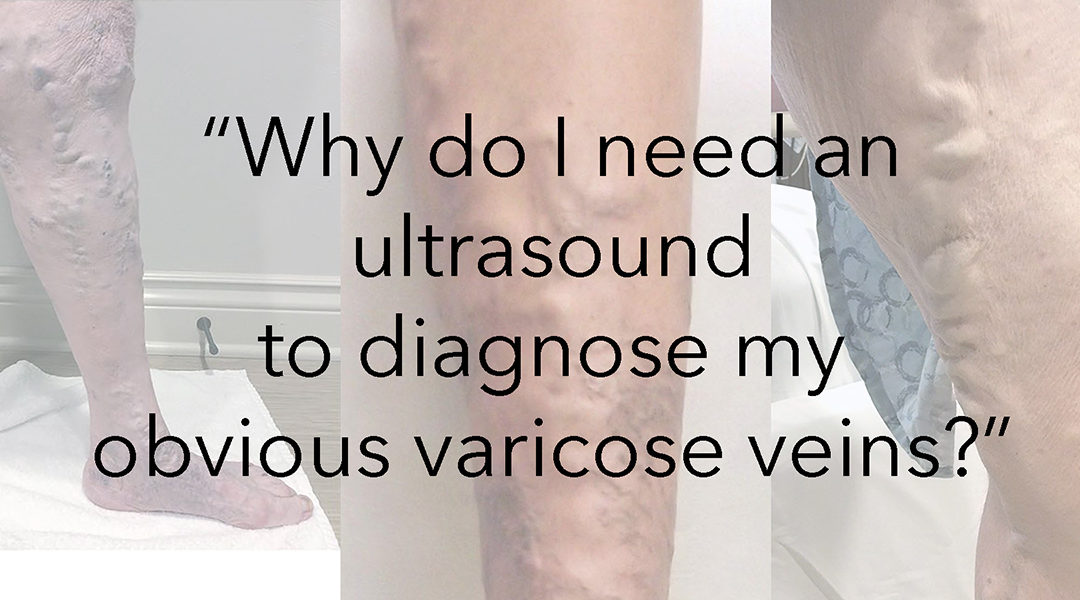At Totality, we are asked this question frequently. First, both Medicare and private insurance companies require an ultrasound to diagnose the source of your varicose veins. An ultrasound finds and documents the vein that is problematic. The examination will also determine the vein’s size, will show if the small valves within the vein are not working correctly, and will record the reflux time or backwards flow of venous blood. When small valves in the vein fail to work correctly, instead of blood flowing upward toward the heart, blood flows backward, pooling in the superficial veins of the leg, causing them to bulge or varicose. Ultrasound imaging is non-invasive, and uses sound waves to look inside the veins. This test is not painful and takes less than an hour to complete.

